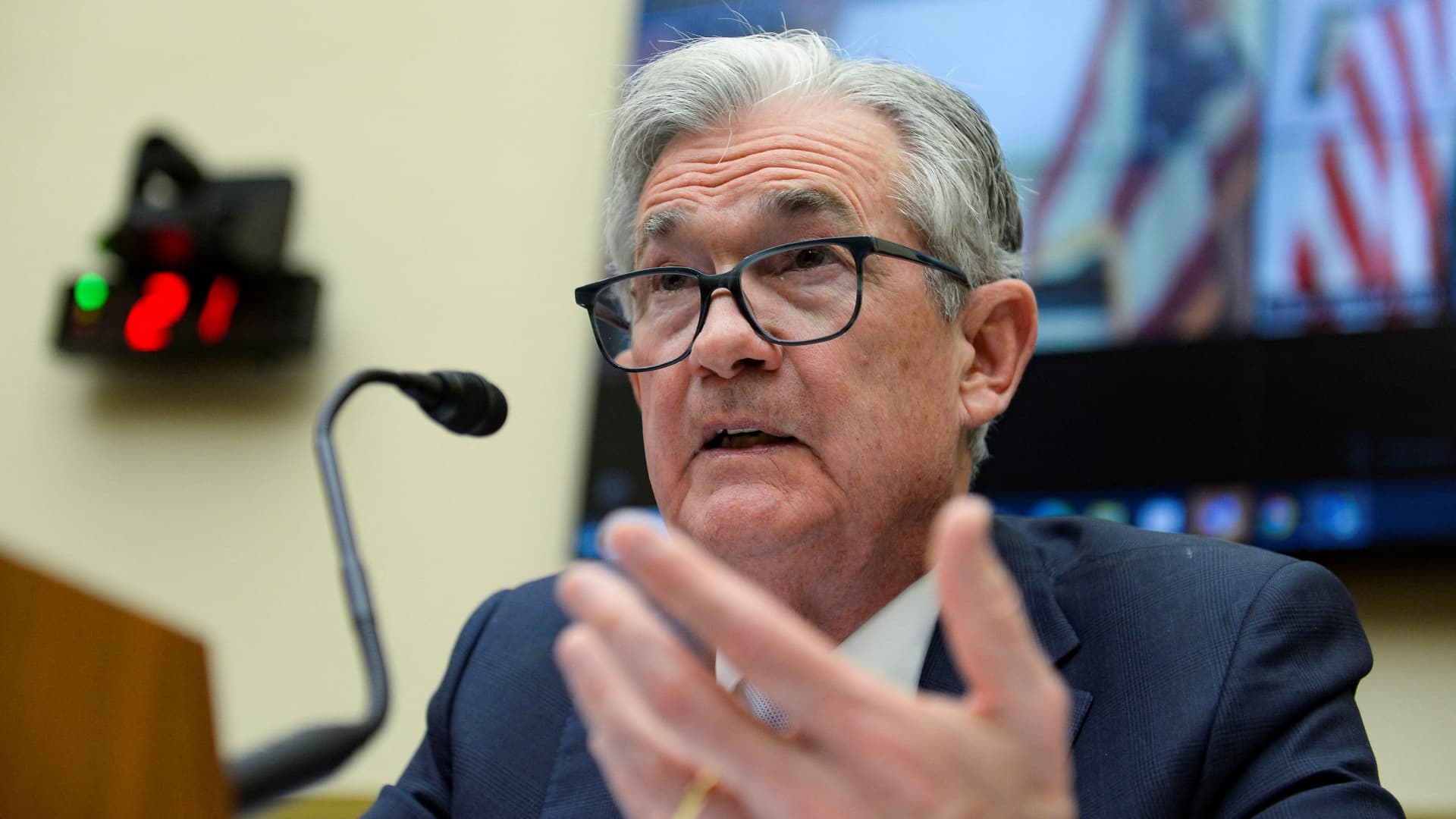Faced with a slowing economy and inflation that at least is showing signs of topping if not retreating, the Federal Reserve next week likely will raise interest rates by three-quarters of a percentage point. For a brief period last week, markets had flirted with the idea of the central bank going to a full percentage point move. But Goldman Sachs economists and others on Wall Street now expect the rate-setting Federal Open Market Committee to go with the lower level, which still will match the biggest move since 1994. “This softening of inflation expectations is one reason why we expect the FOMC will not accelerate the near-term hiking pace and will deliver a 75bp hike at the July FOMC meeting,” Goldman economist Ronnie Walker said in a client note Sunday. If the Fed does go that route, it will take its benchmark overnight borrowing rate to a target range of 2.25%-2.5%, where it last was in late 2018. Multiple central bank officials have said in recent days that they would feel comfortable raising rates 0.75 percentage points at their meeting next week. However, they also left the door open to go higher. As of Monday morning, markets were pricing in about 2-to-1 odds that the increase would be three-quarters of a percentage point, or 75 basis points, according to CME Group data. Walker said one of the key inputs for the Fed will be Friday’s University of Michigan consumer sentiment survey , which saw five- to 10-year expectations fall to 2.8% , a 0.3 percentage point decline. It was the Michigan survey that in June saw the Fed scramble from a half-point hike to three-quarters of a point after the inflation expectations rose. Goldman expects that lower gasoline prices have helped drive the softening. “The decline in both household and market-based measures has reflected a combination of lower gasoline prices — which markets expect to fall further in the near-term, but our commodity strategists expect to rebound — and accelerated monetary policy tightening that has also led to growing expectations for a recession,” Walker wrote. The Michigan data came the same day as a report showing that June retail sales were a touch better than expected, though still lagging inflation. On Thursday, Fed Governor Christopher Waller said he would be watching the retail data closely, along with this week’s housing numbers to decide whether to go with a hike of 75 or 100 basis points. The report provided ammunition in both directions. Waller said he’d be looking for softening demand in response to Fed tightening, and the retail report provided the opposite — that consumers have been resilient despite higher rates. Some on Wall Street still think the Fed could opt for a full percentage point increase. “A broad range of incoming data … suggest inflation has become more entrenched relative to the Fed’s expectations, and that demand remains too strong relative to supply,” wrote Nomura economist Aichi Amemiya. “As a result, we are maintaining our expectation of the Fed raising rates by 100bp in July, up from the 75bp hike in June.” Indeed, there are multiple data points suggesting that inflation pressures remain persistent. The Atlanta Fed has a dashboard that follows multiple metrics, each suggesting stubbornly high inflation and the possibility of a wage-price spiral in which both worker pay and prices feed off each other. The central bank district’s ” sticky-price ” consumer price index measure follows goods with costs that don’t change often. That measure rose a record 8.1% in June for data going back to 2012 and is indicative of inflation that has been both persistent and broadening. Along with that, the Atlanta Fed measures wage growth . Its tracker jumped 6.7% in June, also a record for a data set that goes back to 1997. The conflicting dynamics make for a difficult policy choice. Markets have been especially sensitive to the Fed’s various gyrations, and the confusion around June’s 11th-hour switch to a 75 basis point move spurred criticism that the central bank was crafting policy on the fly. “What is clear to us is that simply chasing headline inflation higher with ever-larger units of hiking and a backward-looking outcome-based rule for stopping raising rates is likely to end badly,” wrote Krishna Guha, head of global policy and central bank strategy for Evercore ISI. “So if the Fed does plumb for a 100bp move it will be critical that it reframes the gameplan for what happens after that. The strategy – or lack thereof – that emerges from July is the key to the macro outlook and risk assets.” There’s also a school of thought that it’s not terribly important what the individual moves are but rather what the Fed has in mind for its end game. An inversion between the 2-year and 10-year Treasury notes currently indicates that the bond market is pricing in a recession. A 2-year note currently around 3.17% also points to a Fed that may not be as aggressive as the market thinks. Futures pricing is pointing to a terminal fed funds rate of 3.55% in early 2023. “Whether the FOMC raises interest rates by 75 or 100 basis points a week from Wednesday is much less important to stock prices than where markets believe the Fed will stop the current rate tightening cycle,” wrote Nicholas Colas, co-founder of DataTrek Research. “The good news here is that, for the first time since 2020, markets think the Fed’s projected path is too aggressive. This could leave room for Chair Powell and the FOMC to start guiding down longer-run rate expectations if inflation does start coming down quickly.”


























































![LinkedIn Provides Tips on How to Promote Live Events [Infographic] LinkedIn Provides Tips on How to Promote Live Events [Infographic]](https://imgproxy.divecdn.com/kA4YczoBIs8NmPBiERWa-OxzvYMz5kwjjZ6wewP8z7c/g:ce/rs:fit:770:435/Z3M6Ly9kaXZlc2l0ZS1zdG9yYWdlL2RpdmVpbWFnZS9saW5rZWRpbl9ldmVudF9hZHNfaW5mb18yLnBuZw==.webp)









